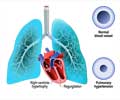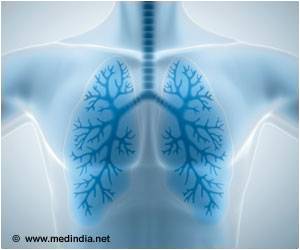
‘A global company specialized in advanced analysis of thoracic CT images announces its new artificial intelligence (AI) -based algorithm for pulmonary hypertension diagnosis, LungQ™ AVX.# Pulmonary Hypertension #machine learning #pulmonary vein’
Tweet it Now
Primary studies, presented the past week at the ATS 2023 International Conference in Washington, show that AVX allows for non-invasive detection of arterial and venous alterations in the lungs, potentially enabling early diagnosis of P(A)H and differentiating between different vascular disease types such as PH groups (WHO classification).Novel Artificial Intelligence Framework to Detect Pulmonary Hypertension Precisely The practical implications of the potential of LungQ™ include diagnostic support (1✔ ✔Trusted Source
Artificial intelligence applied in pulmonary hypertension: a bibliometric analysis
Go to source), robust measurements of treatment outcomes, and more accurate medical and pharmaceutical research.
LungQ™ AVX does not require a contrast-enhanced CT, its sensitivity and accuracy allow for deep quantification of the pulmonary vasculature in routine CT scans without the need for invasive procedures for the patients.
The insights provided by LungQ™ AVX cannot be subjectively assessed from a CT scan as the eye is not sensitive enough to pick up subtle changes in the dimensions of the pulmonary arteries and veins.
AVX could potentially help PH diagnosis by detecting relevant vascular alterations way earlier than they can be picked up by the current golden standard of hemodynamic measurements by right-heart catheterization.
The expectation is that AV phenotyping will have the most noteworthy benefits in detecting pulmonary hypertension (PH) and its subtypes. PH is a rare disease with a very high underdiagnosis rate.
Advertisement
It is an exciting step forward in phenotyping pulmonary vascular disease (2✔ ✔Trusted Source
A transparent artificial intelligence framework to assess lung disease in pulmonary hypertension
Go to source). AVX is a result of almost a decade of research and development work aimed at finding vascular phenotypes to improve the diagnosis of a multitude of vascular diseases and to identify new potential therapeutic targets.
Advertisement
References:
- Artificial intelligence applied in pulmonary hypertension: a bibliometric analysis - (https://link.springer.com/article/10.1007/s43681-023-00267-8)
- A transparent artificial intelligence framework to assess lung disease in pulmonary hypertension - (https://www.nature.com/articles/s41598-023-30503-4)
Source-Medindia















